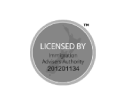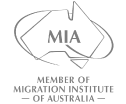So, you’re thinking about making the leap and migrating to Australia, and you’re eyeing a sponsored job as your golden ticket? Smart move. It’s a viable pathway, especially if you possess in-demand skills. But let’s be realistic; securing sponsorship from overseas isn’t a walk in the park. It requires strategy, persistence, and a dash of insider knowledge. This article cuts through the noise and delivers seven pro tips to significantly boost your chances of landing that coveted sponsored job in the Land Down Under.
1. Master the Skills Assessment Maze
Before you even think about applying for jobs, you need to tackle the skills assessment. This is where a designated assessing authority evaluates your qualifications and experience against Australian standards. A positive skills assessment is often a prerequisite for many sponsored visas.
- Identify the Right Authority: Each occupation has a specific assessing authority. Landing the wrong one can lead to delays and wasted effort. The Australian Department of Home Affairs website provides a comprehensive list.
- Gather Impeccable Evidence: Compile all necessary documentation, including transcripts, employment references, and detailed job descriptions. Pay close attention to the assessing authority’s requirements. For example, Engineers Australia has specific formatting guidelines for your Competency Demonstration Report (CDR).
- Address Potential Shortcomings: If your qualifications or experience don’t perfectly align, consider bridging courses or professional development to fill the gaps. A proactive approach shows employers you’re serious. Don’t wait until you’ve received a negative Skills Assessment to make a plan. Take some time to research what the requirements are and seek professional advice prior to lodging.
2. Zero In on In-Demand Industries and Locations
Australia’s job market isn’t uniform. Certain industries and regions are experiencing skills shortages, making them prime targets for your job search.
- Tech Talent Hotspots: The tech sector is booming, particularly in cities like Sydney and Melbourne. Roles like software engineers, data scientists, and cybersecurity specialists are consistently in high demand. Research the talent trends that show that most Australian tech companies are hiring.
- Healthcare Heroes: With an aging population, healthcare professionals, especially registered nurses and doctors, are highly sought after across the country.
- Regional Opportunities: Don’t overlook regional areas. The Australian government is actively encouraging skilled migrants to settle outside major cities through initiatives like the Designated Area Migration Agreements (DAMAs). These agreements offer a broader range of eligible occupations. For example, the Northern Territory DAMA includes roles not typically on the standard skilled occupation lists.
- Targeted Research: Spend time on job boards like Seek, Indeed Australia, and LinkedIn to identify specific roles and locations with high demand. Use keywords relevant to your skillset and desired location.
3. Tailor Your Resume and Cover Letter to Australian Standards
Your resume and cover letter are your sales pitch. They need to resonate with Australian employers who may have different expectations compared to your home country.
- Highlight Relevant Skills: Focus on skills and experience directly relevant to the job description. Quantify your achievements whenever possible (e.g., “Increased sales by 20% in one year”).
- Use Australian Terminology: Familiarize yourself with Australian workplace terminology. A “CV” is generally referred to as a “resume.” “Annual Leave'” is the same as PTO.
- Address Selection Criteria: Most Australian job applications require you to address specific selection criteria. Take the time to articulate how your skills and experience meet each criterion with examples.
- Proofread Meticulously: Errors in grammar and spelling are a red flag. Have a native English speaker review your documents before submitting them.
4. Network Like a Pro (Even From Afar)
Networking isn’t just about attending events. It’s about building relationships and making connections that can open doors.
- LinkedIn is Your Friend: Actively engage with Australian professionals in your field on LinkedIn. Join relevant groups, participate in discussions, and reach out to people working at companies you’re interested in. A well-crafted message expressing your interest and highlighting your relevant skills can go a long way.
- Attend Virtual Events: Look for online industry events, webinars, and conferences hosted by Australian organizations. These events provide valuable networking opportunities and insights into the Australian job market.
- Informational Interviews: Reach out to professionals in your field and request informational interviews. These informal conversations allow you to learn about their experiences, gain insights into the industry, and potentially uncover job opportunities. A well-written email to a hiring manager can be a game-changer.
5. Target Companies Known for Sponsoring
Some companies are more willing to sponsor overseas workers than others. Focus your efforts on these organizations.
- Research Sponsorship History: Utilize online resources and databases to identify companies with a track record of sponsoring visas like the Skilled Occupation List and reach out to agencies specializing in skilled migration.
- Multinational Corporations: Large multinational corporations with a presence in Australia often have established sponsorship programs.
- Recruitment Agencies: Partner with recruitment agencies specializing in skilled migration. They have connections with employers actively seeking sponsored workers. Be wary of agencies that charge exorbitant fees upfront. Look for agencies that work on a commission basis, receiving payment only when they successfully place you in a sponsored role.
6. Ace the Interview (Remotely)
If you land an interview, prepare to impress. Remote interviews are common for overseas candidates, so ensure you have a strong internet connection and a professional setup.
- Practice the STAR Method: Use the STAR method (Situation, Task, Action, Result) to structure your answers to behavioral questions. Provide specific examples that demonstrate your skills and accomplishments.
- Research Australian Workplace Culture: Understand Australian workplace norms and values. Be prepared to discuss your understanding of teamwork, communication, and problem-solving in an Australian context.
- Ask Insightful Questions: Prepare thoughtful questions to ask the interviewer. This demonstrates your interest in the company and the role. Inquiring about the company’s sponsorship process and support for overseas workers is perfectly acceptable.
7. Be Patient and Persistent
Finding a sponsored job from overseas takes time and effort. Don’t get discouraged by rejections.
- Stay Positive: Maintain a positive attitude and keep refining your job search strategy. Rejection is a part of the process.
- Expand Your Network: Continuously expand your network and seek feedback on your resume and interview skills.
- Consider Bridging Options: If you’re struggling to find a directly sponsored role, consider options like temporary work visas or graduate programs that can lead to sponsorship down the line. Also exploring options like going through Australian education or training to improve your local prospects can be a worthwhile investment.
Conclusion
Landing a sponsored job in Australia from overseas is a challenging but achievable goal. By implementing these seven pro tips, you’ll significantly increase your chances of success. Remember to research thoroughly, tailor your approach, network strategically, and remain patient. Your dream of working and living in Australia could be closer than you think. Good luck!










